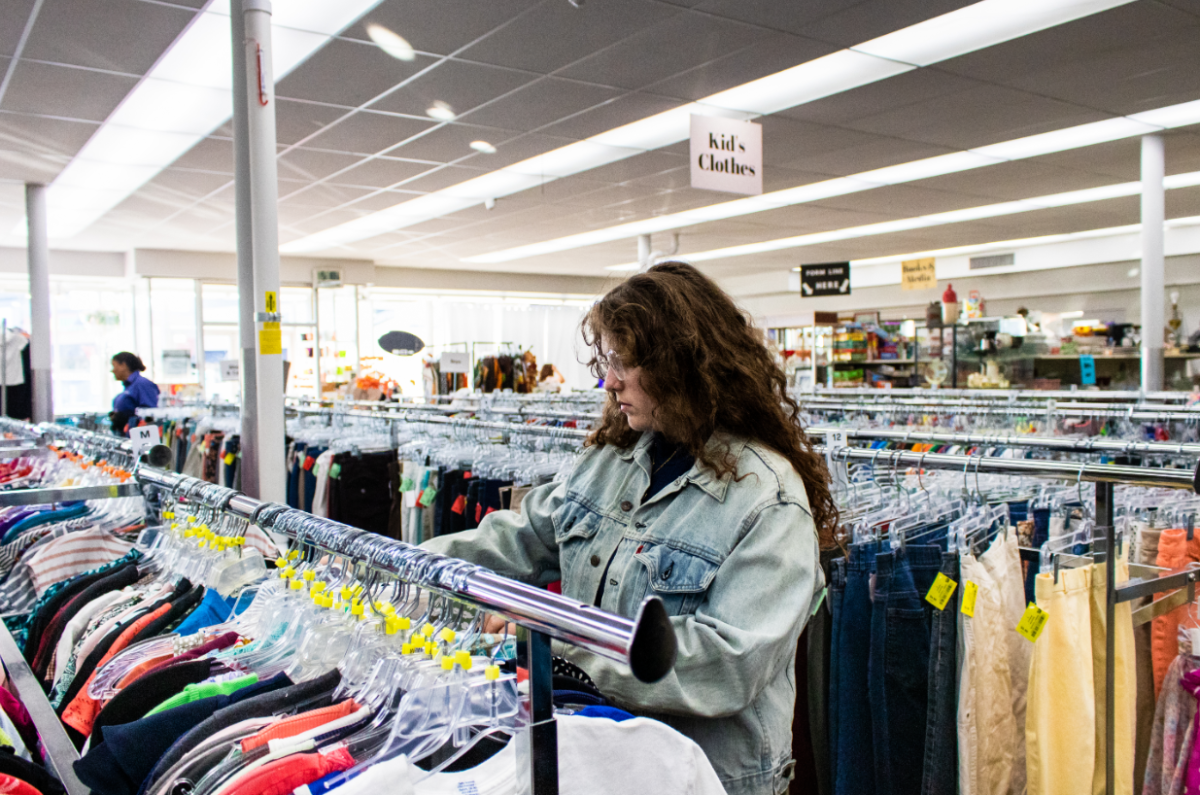With Halloween quickly approaching, many people may turn to fast fashion, inexpensive clothing produced rapidly using cheap labor, to find costumes. However, many engage in fast fashion all year round.
A 2022 report published by ThredUp, an online secondhand clothing store, stated that 45% of college students said it is hard to resist the temptations of fast fashion while 51% said they want to stop buying or buy less from fast fashion brands.
Katrina Liberman, a senior environmental science major at the University of Minnesota, said fast fashion is a cheap avenue for buying clothes, but it is horrible.
To Liberman, thrifting is just as cheap.
“Shopping produces so much textile waste and water consumption, and thrifting is so much cheaper,” Liberman said. “Why wouldn’t you just do that?”
Kobe Knettel, a senior environmental sciences, policy and management student and the president of the Environmental Student Association (ESA), said a lot of undergraduate students buy from stores like Amazon and Shein.
“Sustainable clothing is not really something that exists,” Knettel said. “Even if people are buying newer, higher quality clothing, it still is generally unsustainable.”
Knettel said fast fashion contributes to a lack of individuality in what people wear by selling micro-trends. Thrifting allows people to experiment and wear unique items.
“They do promote lifestyle habits that hinder individualism,” Knettel said.
Good On You is a website that rates the sustainability of brands and publishes articles about sustainable consumerism, Knettel said.
Ava Kharin, a senior environmental sciences, policies and management student and vice president of ESA, said fast fashion is a consequence of hyperconsumerism, the act of consuming goods beyond necessity, but it is hard to be a “good consumer” given the options.
“It is definitely becoming more and more of an issue,” Khrain said.
Consumers tend to prioritize convenience, Kharin said. The TikTok Shop is indicative of this because people can purchase items directly from the app for very cheap.
Both Knettel and Kharin said Halloween is a time when people take advantage of fast fashion.
“Halloween is a huge time where people will turn to fast fashion websites, buy stuff for costumes and wear it once,” Knettel said.
Shopping sustainably can go beyond just shopping secondhand.
Siri Stortroen, a junior history and urban studies major, said she prioritizes intentionality with her clothing while thrifting.
“I’m always trying to buy secondhand, and I ask myself why I’m buying the item, whether I’m buying it for a trend or if it’s actually personal to me and conveys a story within my style,” Stortroen said.
Ellery Funk, 24, said she lived in a van for six months, and from that experience, is a very minimal shopper. Other than that, Funk said she buys all her clothes secondhand and is also very intentional.
“Before I go into a vintage or thrift store, I try to have an idea in my head of what I need or want instead of walking in with a completely open mind,” Funk said.
The quality of clothing items can vary, and there is an influx of fast fashion in thrift stores. Funk said she avoids clothes from Shein, Forever 21 and Urban Outfitters in thrift stores.
Knettel checks for quality, price and overall need. He said he once found Diesel jeans for $20, but he put them back. Knettel said he has enough denim in his closet and decided to leave them for someone who needs jeans.
Before donating or disposing of clothes, Kharin recommends trying to upcycle them first. Kharin is currently working to patch up the sweatpants she wore to death.
“I got a ton of patches,” Kharin said. “I’m going to make them patchwork, so I’m going to be able to reuse those sweatpants.”
The University has events and places that can help people consume clothing sustainably.
The ESA is hosting a clothing swap on Nov. 4 in Coffman Memorial Union. You can donate clothes anytime until then. Bioproducts and Biosystems Engineering is also hosting a sustainability swap of clothing, plants and books on Oct. 11.
The Toaster in the basement of Walter Library has resources for students to upcycle their clothes, such as a sewing machine. If you feel like digging, the Goodwill Outlet in St. Paul is a few stops on the light rail from the East Bank station.








